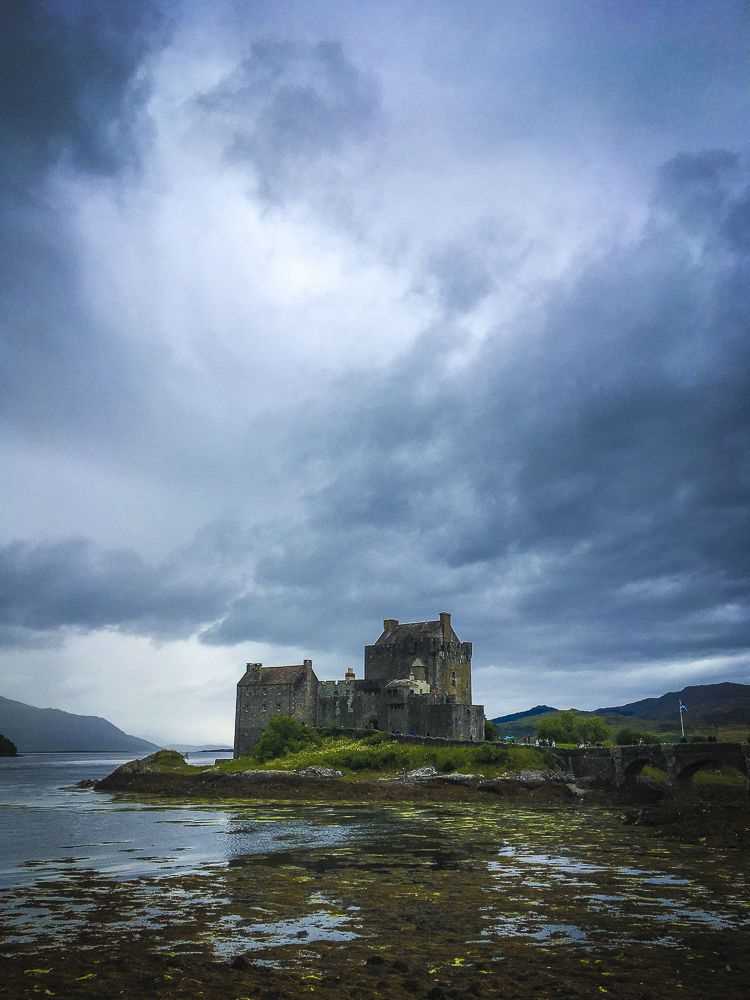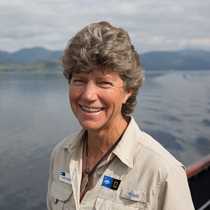A bright rainbow blazed across the sky this morning as we set off on our outings for our first full day with the Lord of the Glens.
One group set off for Eilean Donan Castle and the town of Kyleakin. To reach Kyleakin, the group had to cross over the Skye Bridge to reach the Isle of Skye. They had time to explore the Isle of Skye and the ruins of Castle Moil, which is where the Vikings extracted a toll for those coming through the narrow stretch of sea that separates the mainland from the Isle of Skye. Kyle means “narrows” in Gaelic, thus the town of the Kyle of Lochalsh on the mainland side of the Skye Bridge and Kyleakin on the other. The group then set off for Eilean Donan Castle, a picturesque structure set on the mainland coast not far from Kyle of Lochalsh. The castle is an imposing building that could be the most photographed structure in all of Scotland. Colonel Macrae renovated the building during the 20th century for Clan Macrae, and much of what is seen today comes from that time.
The second group followed the rainbow out to the Cuillin Mountains for a hike through one of the wilder parts of Scotland. The hikers set off up Glen Sligachan, with the Black Cuillin rising steeply on one side and the Red Cuillin on the other. Most of Skye was formed from volcanic activity over 60 million years ago, and the Black Cuillin are igneous gabbro and the Red Cuillin are igneous granite. The landscape has been subsequently shaped by erosion and was carved by ice during the Ice Age which created dramatic scenery. Along the trail we saw the insectivorous sundew and butterworts, plants that eat insects; we decided they must be happy in the midge-y landscape of Scotland! The walk provided an ample amount of Scottish weather as well, with a few showers to brighten the way.
In the afternoon we had more Scottish weather. We sailed from Kyle of Lochalsh to Armadale under beautiful, sunny skies, watching the water for dolphins, porpoises, guillemots, gannets, and Manx shearwaters as we went. After lunch, we put in at Armadale and disembarked to visit the Clan Donald Center. We had the option to walk or by shuttle bus. Many decided to make the trip on foot, given the beautiful sunshine, only to be drenched by a Scottish shower! The center has a small but informative museum that provided a historical overview of the Lord of the Isles, a line of nobility from a mixed Viking-Gaelic ancestry that ruled over the west coast and islands of Scotland until the 15th century.
The ruins of the Armadale Castle are not far from the museum; constructed in 1815, the castle was burnt down in the 1850s. Carol, Stewart, and Robin strolled the grounds with a group, providing information on nature, culture, and photography.
Back on board, we set sail for the small village of Inverie on the Knoydart Peninsula of mainland Scotland. During our journey we had a full and informative recap: Stewart talked about iPhone photography, Robin summarized community buyouts, and Carol talked about archaeological findings in the vicinity of our day’s travels. Community buyouts are relevant for the coming days, as Knoydart and Eigg are community-owned estates where the local people have come together to buy the estate that they live on.
Evening found us in Inverie, which is only accessible by boat or foot. With a pleasant evening of golden sunlight and calm, many left the ship after dinner for a stroll or a visit to The Old Forge Pub, considered the most remote put in all mainland Scotland. It was a wonderful ending to our first day in the Highlands and Islands.









